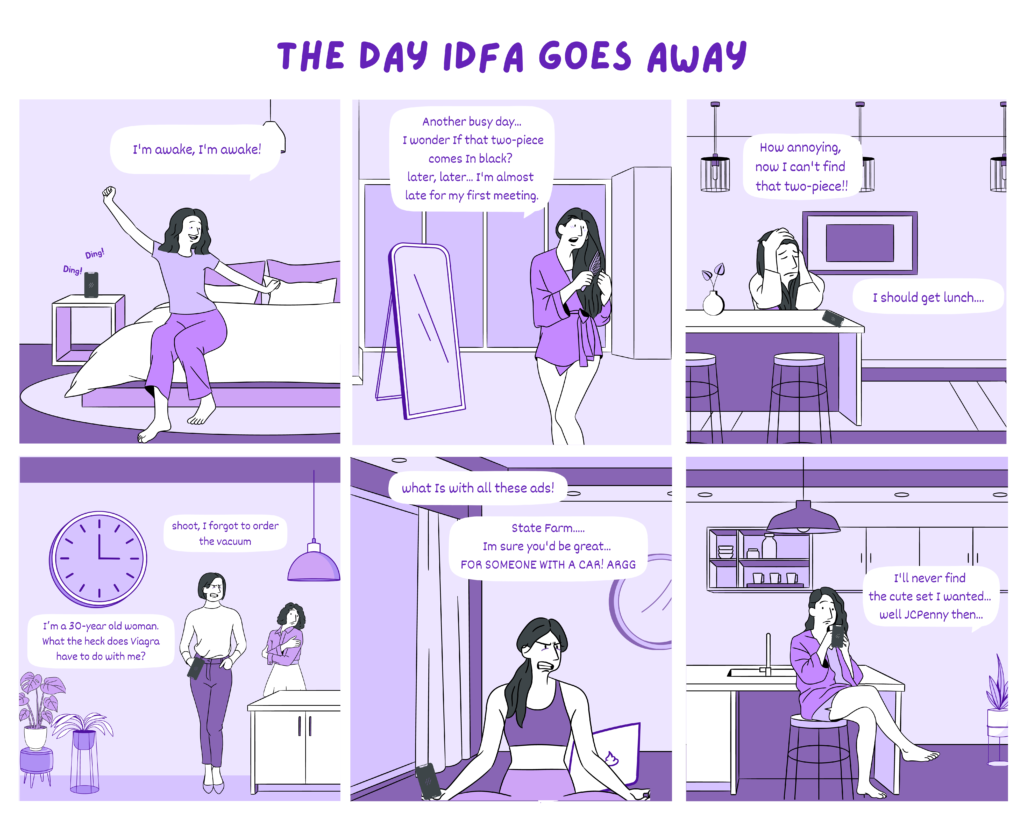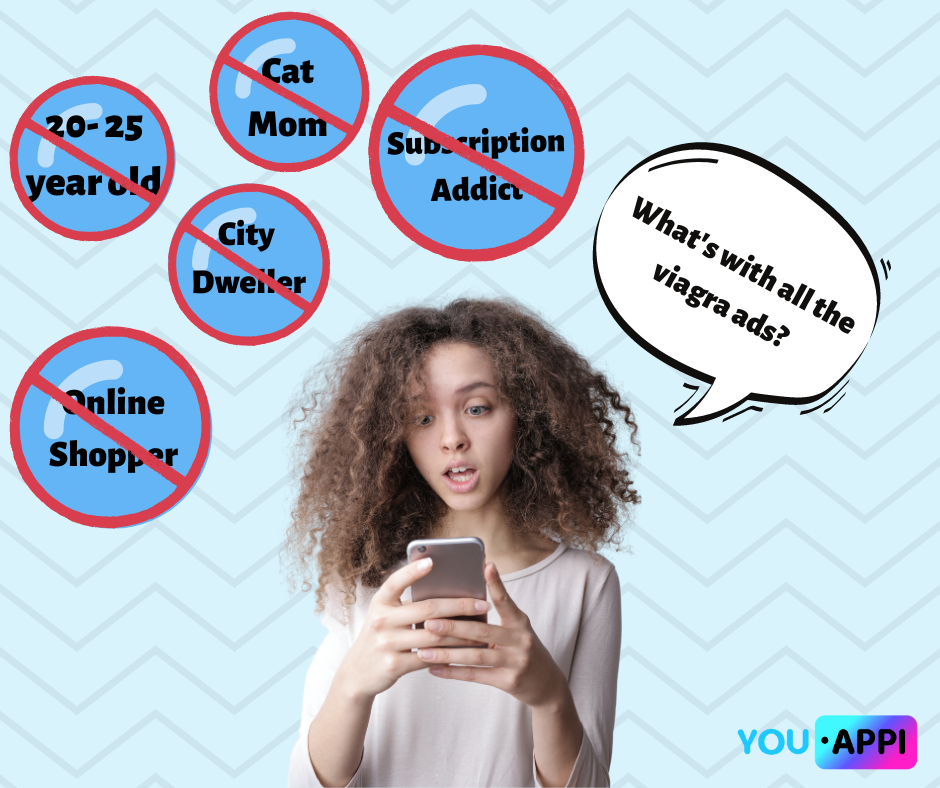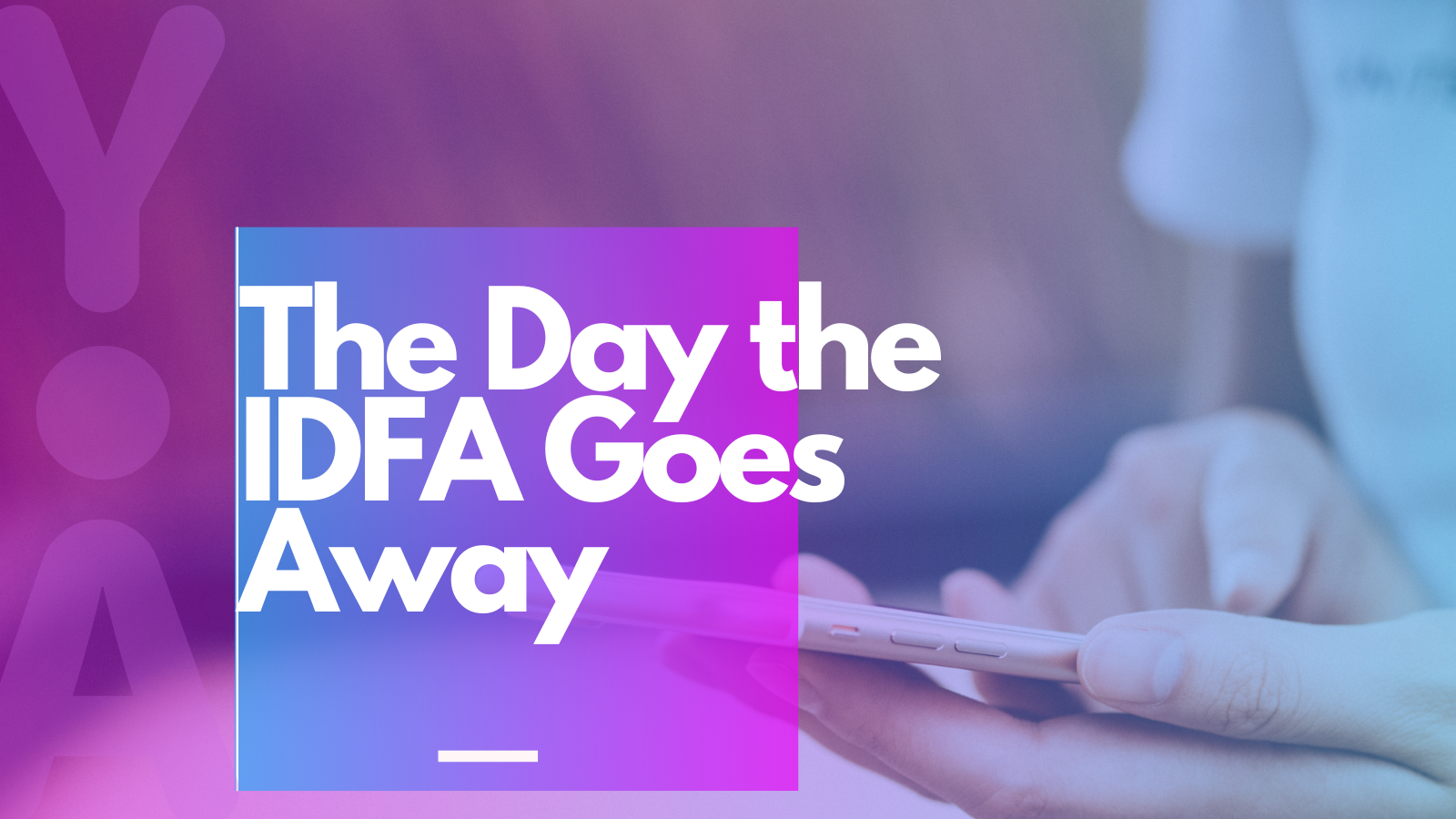During WWDC in early 2020, Apple released new privacy controls for the IDFA, its iOS advertising identifier. This announcement followed Google’s third-party cookie deprecation announcement.
Like third party cookies, Apple’s IDFA creates a unique identifier for users. However, instead of tracking users on desktop and mobile web browsers, it does so for apps on iOS devices. Starting in early spring, iOS 14 devices will require user consent to deploy IDFA within apps. Every app will send a pop-up notification asking for user permission under Apple’s ATT Framework.
We’ve already explored how these shifts will impact advertisers, but from a consumer’s perspective, what will the world look like without third party cookies and mobile ad IDs like the IDFA?

Good Morning to an IDFA-less New World
Wake up and before you’ve even rolled out of bed, you grab your iphone to check if you have any urgent messages.
{Studies have found that anywhere from 46-66% of Americans, depending on age group, look at their phone before they even get out of bed.}
Phew. No messages from your boss so you open Instagram to see what the world is up to. You scroll past an ad for a two-piece matching sleepwear outfit and decide to stop and click the ad because it’s very cute. It’s sold by a small clothing company you’ve never heard of. Your alarm starts jingling, snapping you out of your shopping reverie. You get up to brush your teeth and clock in for work remotely for the day.
Mid-morning between meetings you realize you never grabbed a screenshot of that cute two-piece sleep set so you go scrolling back through your Instagram feed to find it. You scroll past two ads for Viagra but you can’t find the cute ‘fit you were mooning over this morning. ‘Dammit’ you think as you scroll past a third Viagra ad. Always remember to screenshot things you remind yourself. The mobile web is a vast and impersonal place, easy to lose things in when life gets hectic.
An Afternoon Full of “You Talkin’ to Me?”
You finally leave your apartment to grab some lunch from the sandwich shop down the street. As you’re waiting in line you open your Amazon app to order a new vacuum cleaner, which is on your to-do list. You scroll past another Viagra ad. ‘I’m a 30-year old woman. What the heck does Viagra have to do with me?’ you think to yourself.
You close out of the Amazon app and open Candy Crush as you wait for your sandwich order. A pop up ad for Febreze car air freshener fills your screen between levels. ‘I don’t even own a car,’ you think to yourself as you roll your eyes and try to tap the ‘x’ icon only to be brought to a Febreze mobile landing page with car fresheners in seven different scents.
Officially annoyed, you close out of the app, pay for your order and head home.
Lunch Isn’t Free and Neither is Anything Else
As you’re sitting down to eat your lunch your friend texts you an article from an online feminist news outlet and you click the link to check it out. You read two sentences and see that the rest of the article is behind a paywall. ‘Huh? I’m pretty sure this website provided free content as of a week ago’ you think.
You scroll through the pay levels and see that you would need to sign up for an online account and pay a $12.99 monthly subscription to read the article. You decide it’s an interesting investment and sign up for the free week trial to test it out.
As soon as you set up your online account, rapid fire Gmail inbox notifications cause your phone to vibrate uncontrollably. You open your Gmail app to find not one, not two but four emails from the news outlet with content recommendations and offers. Frustrated, you delete the emails and click unsubscribe as you close out of your Gmail app.
Mobile Groundhog’s Day
The rest of your work day is free of calls with just some mindless data entry to-dos on your task list so you open the Spotify app to play a podcast while you work. The free version of Spotify with ads has never bothered you before but today you feel like you might scream if you hear another ad for State Farm Insurance. In the span of a 90 minute podcast, you’ve heard the same jingle for car insurance (again, you don’t even own a car nor do you have a driver’s license) four times. You make a mental note to check if you can afford a monthly ad-free Spotify subscription in your budget when you have the time.
Big Brands for Dinner
You pop a frozen pizza in the oven to cook for dinner and decide to go hunting for the cute two-piece set from this morning. The ad is nowhere to be found on Instagram but you keep seeing ads for JCPenney so you go to their mobile site instead to look for a comparable sleep set.
You find a cute set, not quite as cute as the first but now you’re craving a new outfit so you consider it anyways. You’d rather support the smaller retailer -- especially in this economy -- but you can’t for the life of you remember its name. ‘Oh well’ you think to yourself as you scroll through JCPenney’s massive menu of sleep set options, selecting one and heading to checkout.
The Takeaway: What to Expect in an IDFA-less World
-
Less Free Content:
Advertising powers a free internet and consumer access to most content at no-cost. If publishers can’t fill their ad space and monetize their websites and apps, their business models will need to adapt. This means that free content and unlimited access to information could go away. Expect more subscription models, paid content and reliance on contextual targeting.
-
Loss of Relevant, Personalized Ads:
With this ecosystem shift, advertisers reliant on IDFA permissions will have greatly diminished access to consumer browsing data. This in turn means many will not be able to continue to provide the level of personalization consumers expect. Eighty-eighty percent of consumers are more likely to shop with brands that deliver personalized and connected cross-channel experiences. Consumers can expect to see ads that are less relevant and of much less interest to them, inhibiting their overall shopping experience.

-
Increase of Repetitive Ads
Identifiers like the IDFA signal when a user receives an ad. This allows advertisers to set frequency caps to avoid over-messaging consumers. Without caps, consumers are likely to receive more repetitive ads and experience over-messaging as they browse.
-
Less Brand Diversity
With limited access to consumer browsing data, advertisers with bigger budgets and the flexibility to run CPM campaigns will proliferate. Smaller advertisers and indie developers will have less ability to run performance campaigns that test new channels cost-effectively. What does this mean for the consumer? More ads for products made by major brand advertisers such as Proctor & Gamble and Comcast.

